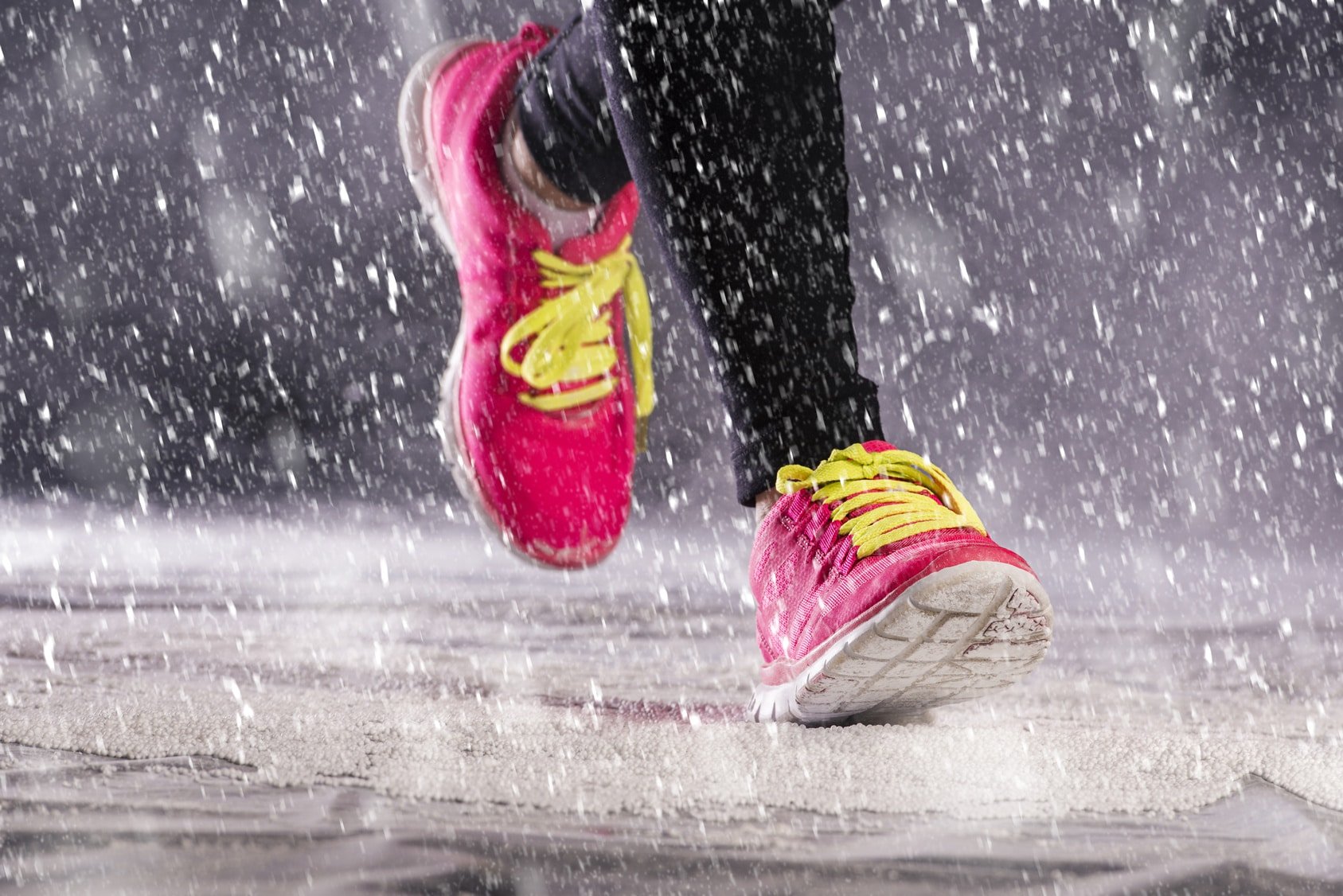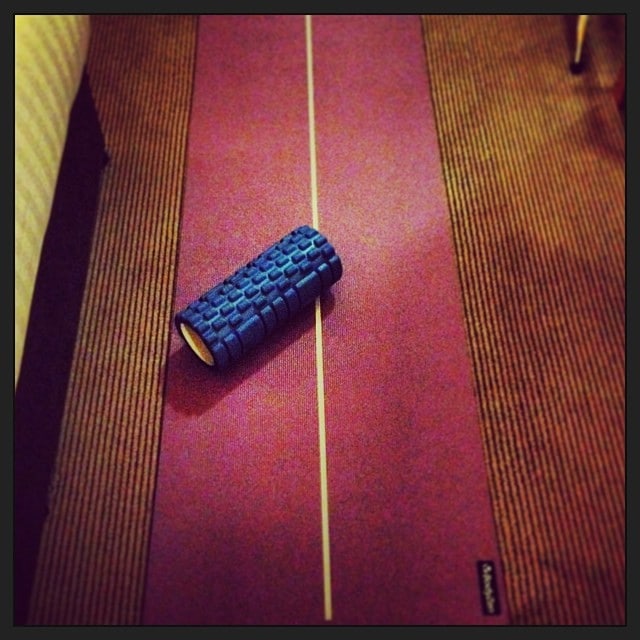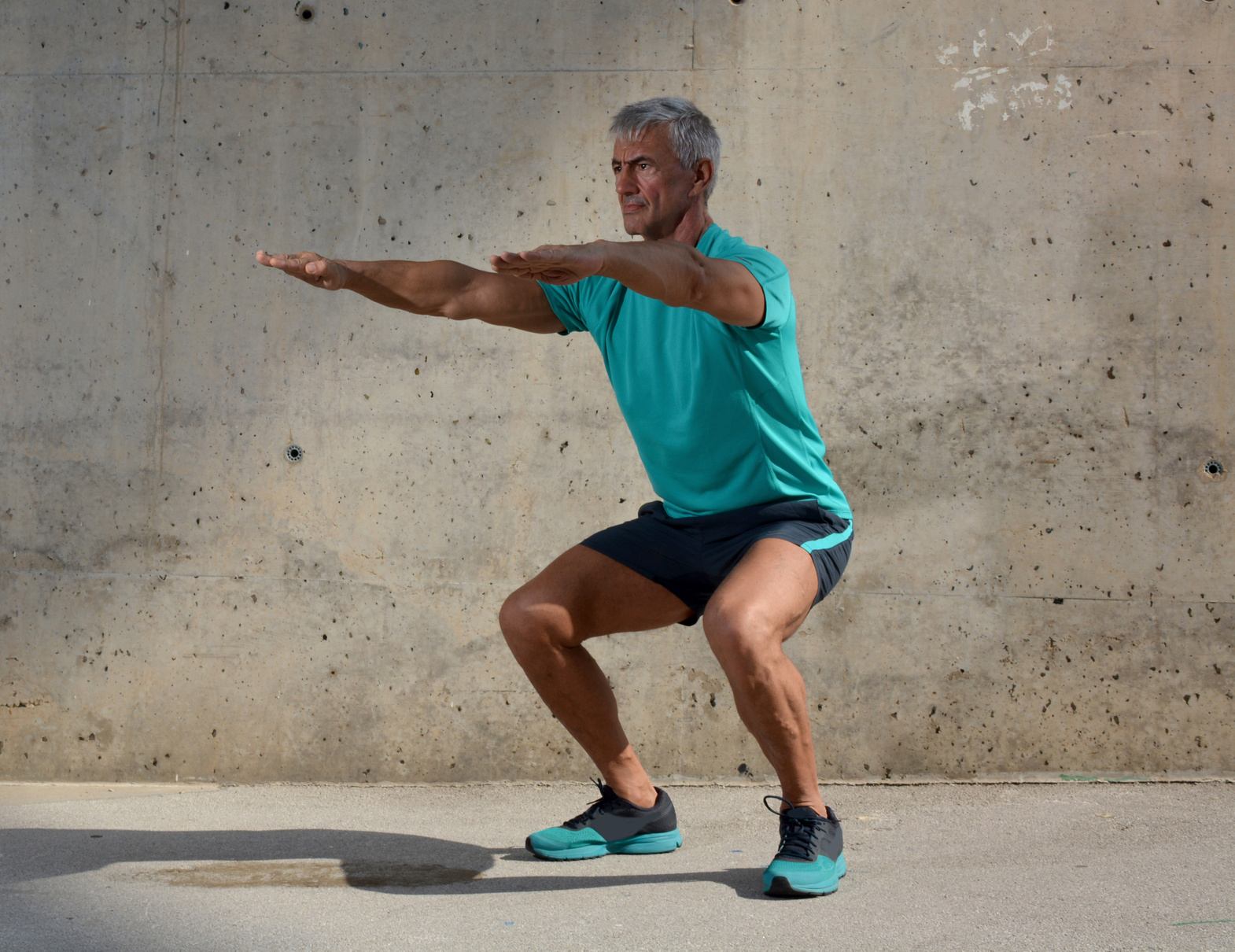You know that feeling when you wake up to the pitter-patter of raindrops on your window, and you can’t help but feel a mix of excitement and dread about your upcoming run? Rain can be a tricky adversary, even for the most dedicated runners, but fear not – it’s time to conquer the rain and turn those soggy miles into a glorious adventure!
Now, let me spill the beans and tell you the truth – running in the rain doesn’t have to be a gloomy affair. In fact, with the right measures and a sprinkle of rain warrior spirit, you can embrace the elements and make those rainy runs not just bearable, but downright invigorating!
Are you ready to dive into the ultimate rainy run survival guide? If you want to know how to stay safe, dry, and comfortable while Mother Nature throws her best rain showers at you, then you’ve come to the right place.
In this article, I’ll spill all my best-kept secrets on how to prepare for rainy runs, from the gear you’ll need to prevent slipping on that treacherous wet concrete.
Are you with me? Awesome! Let’s lace up those sneakers, embrace the raindrops, and dive headfirst into the world of running in the rain. Ready? Let’s go!!
Know When To Quit
So, here’s the deal – running in the rain is generally safe and even beneficial, but we’ve got to be smart about it. If the weather takes a turn for the worst, it’s time to pause and reevaluate. No superhero wants to battle lightning or thunderstones (if they even exist), right?
Step one, check that weather forecast! It’s like having a crystal ball to predict if those rain clouds are bringing friends like lightning and thunder to the party. If they are, well, better reschedule your run for another day or consider a cozy treadmill session instead.
Oh, and don’t underestimate the power of the wind! Especially if you’re planning to run under tree cover, watch out for those sneaky branches – they might just surprise you with their dance moves in the wind.
Plan Your Routes
Let’s talk about the importance of planning your routes – because a well-prepared rain run is a happy and safe rain run!
Listen up – familiarity is your best friend when it comes to running in the rain. Stick to routes you know like the back of your hand, so you can navigate those rain-soaked twists and turns with ease. It’s like having a trusty rain map in your mind!
Now, here’s a golden rule – avoid running in muddy terrains, river crossings, flooded roads, washed-out trails, and puddles that might be hiding deep secrets (like being way deeper than they seem!). Trust me, those sneaky puddles can be like quicksand for your shoes!
And slippery surfaces? Oh, they’re the arch-nemesis of every rain warrior! Avoid them like you would avoid stepping on a banana peel in a cartoon. We don’t need any unintentional slip-and-slide action during our runs!
Now, I know you’re all adventurous rain warriors, but if you’re unsure about the surfaces on your route, take some time to plan ahead. Check out the terrain, be a detective, and ensure your route is as rain-proof as possible.
And if all else fails, don’t worry – we’ve got a plan B! Move your rain run session indoors to a trusty treadmill. Hey, it might not have the thrill of raindrops on your face, but at least you’ll get those miles in, safe and sound, and still feeling like a rain warrior!
Watch Your Step
Hey there, rain warriors! Let’s talk about a crucial aspect of running in the rain – watching your step! Because, let’s face it, slippery surfaces are the sneaky villains we need to outsmart during our rain-soaked adventures!
When it’s raining, even the most innocent-looking surfaces can turn into a slippery slope. Metal pothole covers, sidewalks, painted stripes, and even those seemingly harmless leaves on the ground – they all become our adversaries!
But fear not, brave rain runners – we’ve got a game plan! Picture this as your own rain run ninja training: take small, confident steps, and keep a laser focus on your footing, just like you would when tackling those tricky technical trails. It’s like a rain dance of agility and grace!
Now, I know you’re all daring rain warriors, but even superheroes have their limits. If a surface looks too slippery to conquer, it’s okay to give it a rain check (pun intended, as always!) and find an alternative route. No need to play daredevil with slippery paths – safety is our top priority!
Choose The Right Shoes
Before you brave the rain, give your shoes a thorough check-up. You want shoes with some serious traction, like a seasoned mountain climber scaling Everest.
Look for shoes that have multiple points of contact with the ground – that means more grip and less slip on those treacherous wet surfaces!
Now, here’s the secret weapon – waterproof trail shoes with a Gore-Tex lining upper fabric. These babies are like rain shields for your feet! They’ll repel water like magic, keeping your precious toes dry and cozy while you splash through puddles like a rain warrior.
But hold up – breathability is just as important as waterproofing! We don’t want our own sweat turning our shoes into mini saunas, causing wetness and chafing. Trust me, blisters and chafing are the arch-nemesis of every runner. So, make sure your shoes are breathable like a cool breeze on a summer day!
Now, here’s a little rain run ninja tip – wear moisture-wicking socks to keep your feet dry and happy. It’s like giving your feet their very own rain protection gear!
Dress For The Rain
Listen up, rain warriors – dressing for the rain is like preparing for the most epic water park adventure of your life! But fear not, we’ve got the perfect rain-proof outfit to keep us comfortable and ready to conquer those rain-soaked miles!
Here’s the secret sauce – light and moisture-wicking layers are your best friends. Think of it like having a rain-resistant armor that keeps you cozy and dry, no matter how much Mother Nature tries to drench you in her raindrops!
So, when it comes to clothing, go for technical fabrics– Coolmax and polypropylene. These magical materials repel sweat and water like raindrops on a freshly waxed car. Say goodbye to those uncomfortable wet clothes, and hello to the feeling of dryness and comfort!
Now, let’s build our ultimate rain warrior outfit, shall we? Start with waterproof shorts – yes, they exist, and they’re a game-changer for avoiding that dreaded waterlogged feeling! And don’t forget those trusty compression shorts underneath – they’re like our secret weapon against chafing!
Next up, a long-sleeve base layer to keep our core cozy and protected from the rain’s chilly embrace. It’s like a warm hug from a rain-proof cloud!
And for the grand finale, top it all off with a waterproof outer layer – a light wind- and water-resistant jacket or vest. It’s like wearing a magical rain shield that keeps us dry while we take on the rain-soaked world!
Running Socks
your sock choice is as important as those trusty shoes and rain-proof layers. It’s like having a cozy little raincoat for your feet, protecting them from all the wetness and chafing that rainy runs can throw at us!
When you’ve got the right pair of running socks, it’s like a symphony of comfort and blister prevention. Those pesky blisters tend to love the rain, but we won’t let them ruin our party, will we?
So, here’s the rain run sock rulebook – when choosing your perfect pair, look for high-performance and moisture-repelling fabrics. We want those socks to be like our personal rain-shield, keeping our feet dry and happy while we splash through those puddles!
Flat seams are a must – no irritating rubbing or chafing allowed! It’s like our socks are giving our feet a gentle hug, rather than a wrestling match with rough seams.
Oh, and let’s not forget about mesh ventilation under the arch – it’s like giving our feet a little extra breathing room during our rain adventures!
Now, here’s the secret ingredient for a blissful rain run – a snug fit! We don’t want our socks to wrinkle and bunch up inside our shoes, creating a blister breeding ground. Snug and cozy, that’s the way to go!
But wait, my rain-loving comrades, here’s the golden rule – avoid cotton socks like the plague! They might be cozy in other situations, but in the rain, they’re like moisture magnets, setting the stage for those dreaded blisters. And trust me, that’s not the kind of adventure we signed up for!
Your Headgear
A little hat with a brim can make all the difference during a rainy run!
Picture this – you’re running like a fearless rain warrior, and suddenly, raindrops are attacking your eyes like tiny water bombs. That’s where our trusty hat with a brim comes to the rescue! It’s like a shield against those sneaky raindrops, keeping our vision clear and focused on the prize.
And here’s the best part – a basketball hat can be your best ally during a rainy run! It’s like having a cool, sporty sidekick by your side, ready to take on the rain-soaked world with you!
But, my rain warriors, we’ve got to be strategic about our headgear choices! When the weather gets chilly, a light headband or beanie can be our secret weapon against the cold. It’s like a cozy blanket for our head, keeping us warm and ready to conquer the rain-soaked trails!
Stay Visible
When it comes to running in the rain, make it a rule to be seen by drivers and pedestrians alike, so you can conquer those rain-soaked roads with confidence and safety in mind!
Picture this – you’re a radiant rain warrior, glowing with neon running clothing or bright colors like orange, yellow, or pink. It’s like having a superpower – you become a beacon of light, impossible to miss even in the darkest of rain clouds!
And when it comes to outer layers, think light-colored and bright, my rain-loving comrades. Those reflective strips are like our secret weapon against invisibility, shining like stars in the rain-soaked sky.
Now, I know it might sound funny, but dressing like a Christmas tree is actually a genius move! It’s like having a festive light show on your rain run, making sure you’re visible from miles away!
Avoid Chafing
Alright, rain runners, let’s talk about the enemy of every runner – chafing! And guess what? It becomes even more relentless when rain joins the party! But fear not, we’ve got the secret weapon to defeat this pesky foe!
When you’re wet from the rain, chafing can turn into a major battle, like an epic showdown between good and evil. But we’re not going to let chafing ruin our rain run adventure, are we?
Here’s the secret sauce – lubricants like Vaseline or Body Glide are like our trusty shields against chafing. It’s like having a magical forcefield, protecting us from the uncomfortable friction that can make rainy runs a nightmare.
So, here’s the battle plan – before you hit the rain-soaked trails, apply those lubricants anywhere there’s potential for chafing. Underarms, check! Nipples, check! Feet, check! Inner thighs, check! Sports bra lines for our women warriors, check!
And here’s a pro-tip – don’t be shy with the lubricants. The more, the merrier! It’s like creating an armor of comfort and protection against chafing.
Protect Your Electronics
Ah, rain runners, let’s talk about our loyal sidekicks – our phones and electronics! They might not be able to run with us, but they’re definitely part of our rain-soaked adventures. And you guessed it right, they need protection too!
When rain comes pouring down, it’s not just our bodies that get soaked – our phones and electronics are in the line of fire too! But fear not, we’ve got the ultimate rain-proof plan to keep them safe and functioning like champions!
First things first – gear up with running gear that has sealable, water-resistant pockets. It’s like giving our electronics their very own raincoats, shielding them from the wetness and raindrops!
But wait, there’s more – we can take it a step further! A sealable bag for our phones is like having a secure fortress, protecting them from the rain’s relentless assault. Just hold it in your hand like a trusty rain shield, and you’re good to go!
Here’s a little trick I’ve learned – when the rain gets really heavy, go for the Ziplock bag strategy. It’s like an extra layer of protection, ensuring that not a single raindrop can reach our precious devices. Pop it in a hydration pack or a flip belt, and they’ll stay safe and dry like a treasure hidden from the rain!
Change Out Immediately After A Run
When you’re done conquering those rain-soaked trails, there’s one golden rule – change out of those wet clothes faster than lightning! Trust me, it’s like a secret weapon against colds and potential chill-inducing mishaps.
As soon as you finish your triumphant rain run and make it back home, it’s time to spring into action – get out of those wet clothes and into dry ones immediately! And yes, a quick shower is a must, because who doesn’t love feeling fresh and rejuvenated after a rain-soaked adventure?
Now, I know what you might be thinking – “But I feel all warm and cozy after my run!” And you’re right! But here’s the catch – staying wet for too long can increase your risk of catching a pesky cold or, heaven forbid, hypothermia!
And here’s another perk – changing into dry clothes also keeps our rain conqueror outfits smelling fresh and free from any lingering stink. It’s like a victory dance for our gear, saying, “Thanks for getting me through the rain, now let’s be clean and ready for the next adventure!”
Dry Out Your Shoes
Here’s the deal – If it rains often in your region, you absolutely need more than one pair of running shoes. It’s like having a trusty backup team, always ready to take on the rain-soaked trails while the other pair dries out like a champ.
So, let’s talk about the secret to handling wet shoes like a pro. First things first, when you’re back home from a rainy run, it’s time to take off those soaked shoes and let them rest. Nothing is worse than trying to squeeze your feet into wet shoes the next day.
Now, let’s talk about the magic of shoe rotation. Having multiple pairs of running shoes is like having a rain conqueror wardrobe. It not only extends the life of your shoes but also ensures you always have a dry pair ready to take on the next adventure!
But here’s the pro-tip – to speed up the drying process, remove those insoles and stuff your shoes with paper towels or newspaper. It’s like giving them a little moisture-absorbing spa treatment! And hey, if you’re in a pinch, feel free to use toilet tissues – no judgment here, we’ve all been there
Change out the stuffing after a few hours, especially if your shoes were completely soaked. We want them to dry thoroughly and keep their shape intact like a true rain warrior!
How To Run In The Rain – The Conclusion
Rain runners, we’ve come to the end of our rain-soaked adventure, and what a journey it’s been! Remember, the hardest part of running in the rain is taking that first step. It’s like stepping into the unknown, braving the elements, and conquering any doubts that may try to hold us back.
But once you take that leap of faith and hit the rain-soaked trails, something magical happens. You might just find yourself enjoying the rhythmic sound of raindrops, the fresh scent of wet earth, and the feeling of freedom as you splash through puddles like a kid again.
Yes, rain running has its challenges, but it’s also a true test of our strength, resilience, and dedication. It hones our mental toughness like nothing else, preparing us to thrive not just on the rain-soaked trails but in the real, harsh world outside.
And remember, the rest is just details, as the saying goes. We’ve armed ourselves with the best advice – from staying safe in the rain to choosing the right gear, preventing chafing, and keeping our tech dry. We’ve embraced the rain like a true rain warrior!
So, my rain-loving comrades, let’s continue to lace up, embrace the rain, and conquer those rain-soaked trails with confidence. With each rain run, we grow stronger, more fearless, and more connected to the elements around us.















